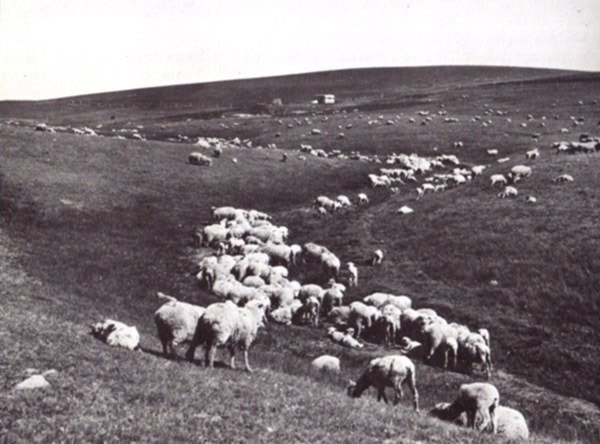At the end of the Riel Rebellion in the late 1800s, many thousands of acres of land northeast of Ponoka were designated by the government to serve as the reserves for the Samson, Bobtail, Erminskin and Montana Indian Bands. With the strong interests and influx of settler families into the area, an agreement was made by the government with the four bands in 1909 to sell 120,000 acres of the reserve land by public auction.
The first sale at Ponoka was realized at a total of $92,510 and was followed by other land sales in 1910 and 1919. Much of the land was scooped up by speculators, so the government quickly imposed a ‘wild land’ tax, which amounted to half of the school tax, which by 1920 was $32 per quarter section. This soon opened up the land for more settlers, and some of the new districts that were formed in the area of lush rolling countryside included: Poplar Forest, Dennis, Arbor Park, Hazel Hill, Bobtail, Sharphead, Ferrybank, and Manito, which meant “Great Spirit’ in Indian language.
Bringing in the sheep
As many new settler families moved into the Manito area and beyond to proudly establish their homesteads, the stores in Ponoka did a brisk business selling lumber, hardware, supplies and services to the excited newcomers from across Canada, the United States, and the world. Along the way, the Manito School No. 3939 at the NE ¼ of11-44-25-W4th opened for classes on January 4, 1921 with Miss Dorothy M. Sweet of Meniak as the first of many popular teachers, who only got paid if everyone paid their taxes.
Among those early pioneers was Thomas McKelvey, father of Percy, who later became a member of the Provincial Legislature for Ponoka, and along with son Gordon (Imperial Oil agent) built a house and three large sheep barns on the NW 13 in 1911, the largest shed being 24 by 150 feet. The land around this area was one big prairie surrounded by a heavy growth of brush with a creek flowing all summer across what later would become the large and palatial early farms of Ernest Holbrook and Fred Falkenberg. In the spring, the Battle River flooded over into much of the surrounding land, but in the summer it all became lush meadows of hay. It was at this time that Thomas McKelvey would embark upon one of the most daring business transactions of our early local history, bringing in 5000 sheep from Montana. He employed two full time herders, Charles Brown of Ponoka and Mr. Mann of Strathcona, who lived on the McKelvey farm with their families and tended to the massive and steadily growing herd. George Sweet of Meniak recalled in the Ponoka Panorama that you could hear the constant loud hum of the baaing sheep from far away, and since there were no fences at that time, they grazed and wandered for miles throughout the district. In those days, they had to put bells around the necks of all their stock so that they could find them.
Due to the later increase of settlers, the severe climate, and the problem of putting up tons of hay in the winters, the entire herd was eventually sold in small lots to farmers throughout Central Alberta. Many of the sheep-sheds were used for granaries or other farm buildings, while the rest were dismantled, thousands of nails were pulled out and then the sturdy fir lumber was used again to build new homes, barns and other structures that would survive for the next 60 years and beyond.
After the devastating drought and depression of 1929 the district slowly recovered, and some of the countless new families that settled there and have carried on through the generations were Sidney and Erven Schalin, Bernhard and Ben Fink, Lawrence Grigat, Fred Lentz, A.T. Johnson, Rod Lewis, John Hayes, Dave Fenske, R. Eastwood, Harvey Flegal, Albert Mattern, Archie Avison, Harley Johns, Percy Doupe, William Rentz, Herb Martin, August Walcheske and on and on into a bright a busy future.
